Mechanical Keyboard Build Tips for Beginners and Enthusiasts
So, you're thinking about building your own mechanical keyboard? Awesome! It's a rabbit hole of customization, feel, and sound, but don't worry, it's a fun one. This guide will walk you through the basics, giving you the knowledge to pick the right components and assemble your perfect board. We'll even highlight some fantastic hot-swappable keyboards that make the process even easier.
Why Build a Mechanical Keyboard?
Before we dive in, let's quickly cover why you might want to build your own keyboard:
- Personalization: Choose every component to match your exact preferences.
- Quality: Often, you can get a higher-quality board for the same price as a pre-built.
- Repairability: Easily replace broken switches or keycaps.
- The Fun Factor: It's a rewarding hobby!
Essential Components
Here's a breakdown of the core components you'll need:
- Case: The housing for all the components. Consider size (60%, 65%, 75%, TKL, full-size) and material (plastic, aluminum).
- PCB (Printed Circuit Board): The brains of the keyboard. It registers key presses and sends signals to your computer. Look for hot-swappable PCBs for easy switch changes.
- Switches: These determine the feel and sound of your keyboard. Linear, tactile, and clicky are the main types.
- Keycaps: The plastic caps that sit on top of the switches. Made from ABS or PBT plastic, with various profiles and designs.
- Stabilizers: These prevent larger keys (like the spacebar and shift keys) from wobbling.
- USB Cable: Connects the keyboard to your computer.
Hot-Swappable Keyboards: A Beginner's Best Friend
For beginners, hot-swappable keyboards are a game-changer. They allow you to easily swap out switches without soldering, making experimentation a breeze. Here are a few excellent options:
EPOMAKER EA75
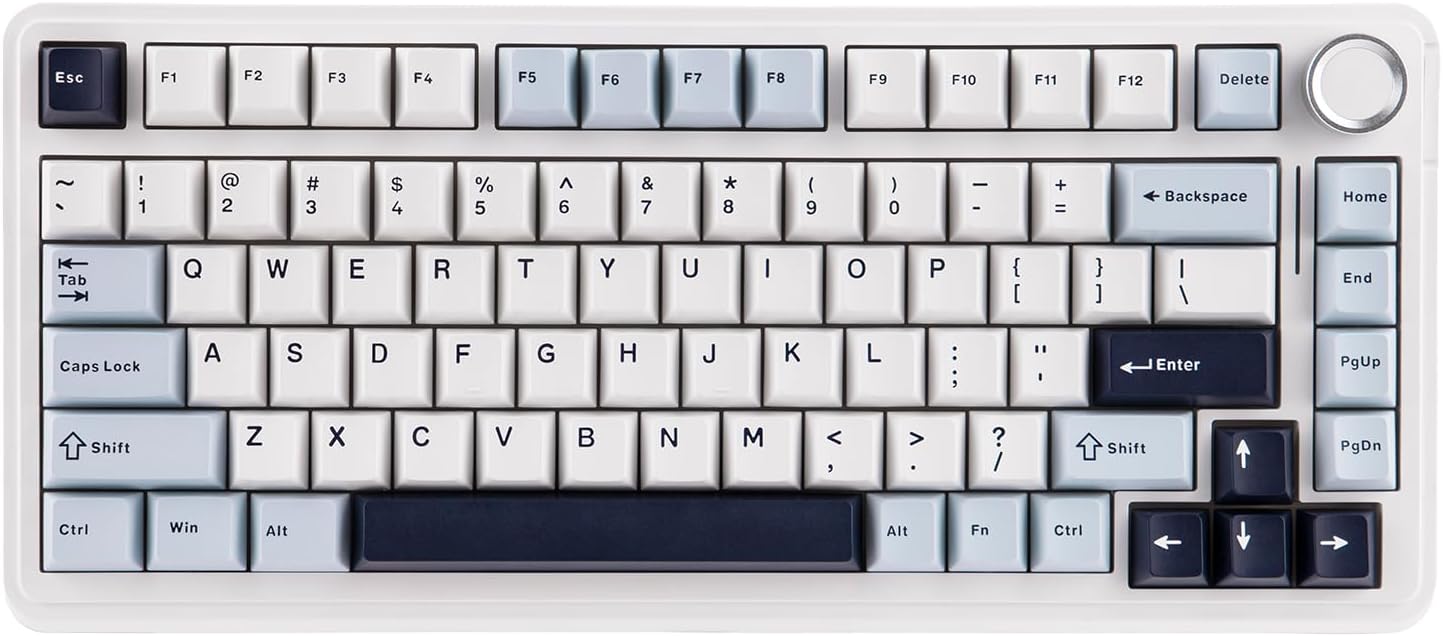
The EPOMAKER EA75 is a fantastic 75% layout keyboard that offers tri-mode connectivity (wired, Bluetooth, and 2.4GHz). It's perfect for those who want a compact yet functional keyboard. The gasket-mounted design and factory-lubed switches provide a smooth and quiet typing experience right out of the box. Plus, the hot-swappable sockets mean you can easily try out different switches to find your perfect feel.
Pros:
- Tri-mode connectivity
- Hot-swappable
- Gasket-mounted design
- Factory-lubed switches
Cons:
- Some users might prefer a different keycap profile
Who it's for: Great for users who want a versatile, ready-to-go keyboard with room for customization.
Keychron K2 HE
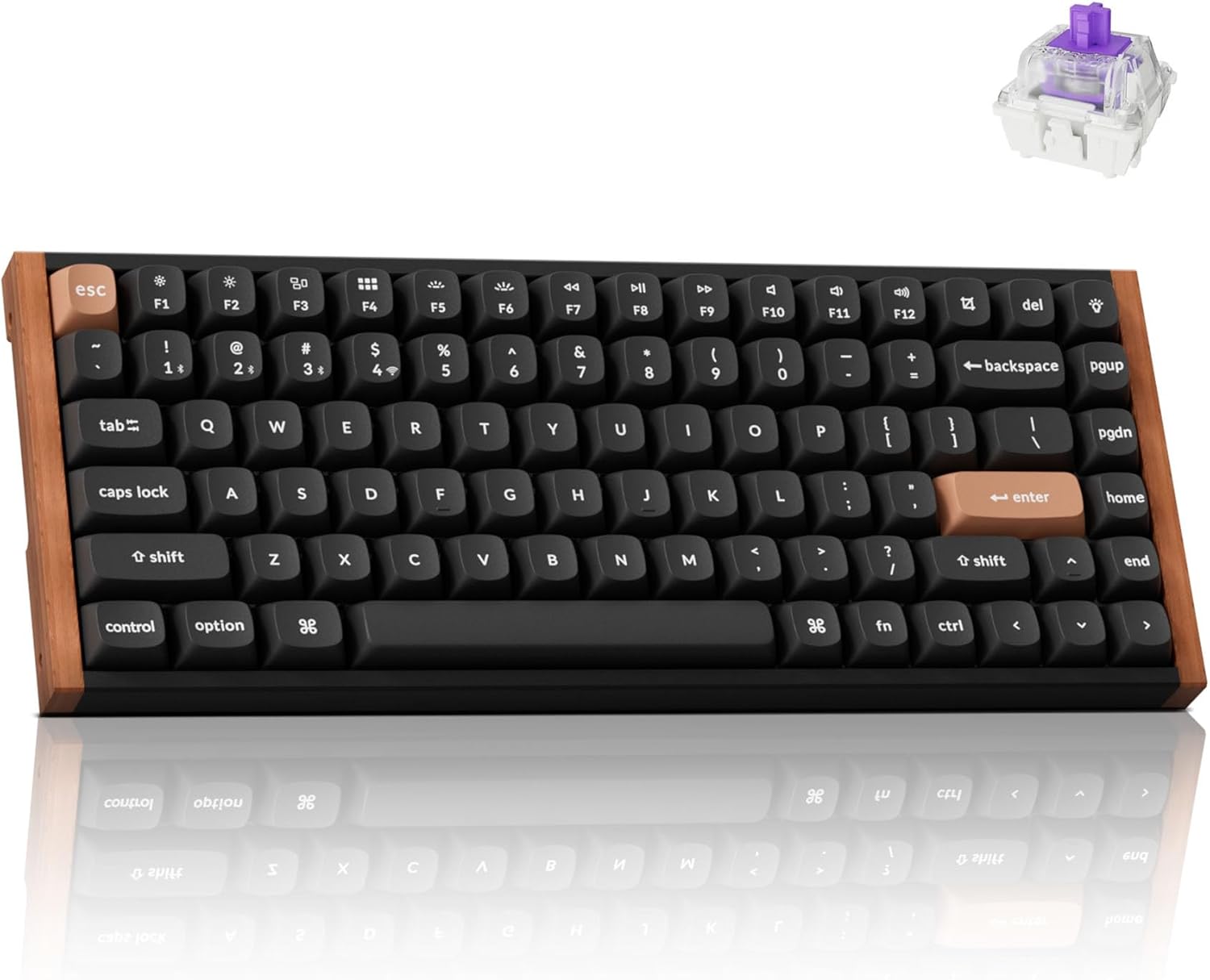
The Keychron K2 HE takes hot-swappability to the next level with its Hall-Effect Gateron magnetic switches. This allows for adjustable actuation points, letting you customize how far down you need to press a key for it to register. This keyboard is ideal for gamers and anyone looking for ultra-fast response times. It also boasts tri-mode connectivity and QMK/VIA programmability for advanced customization.
Pros:
- Adjustable actuation points
- Tri-mode connectivity
- QMK/VIA programmability
- Hot-swappable magnetic switches
Cons:
- Magnetic switches might not be for everyone
- Higher price point
Who it's for: Ideal for gamers and power users who want ultimate control over their keyboard's responsiveness.
AULA F99
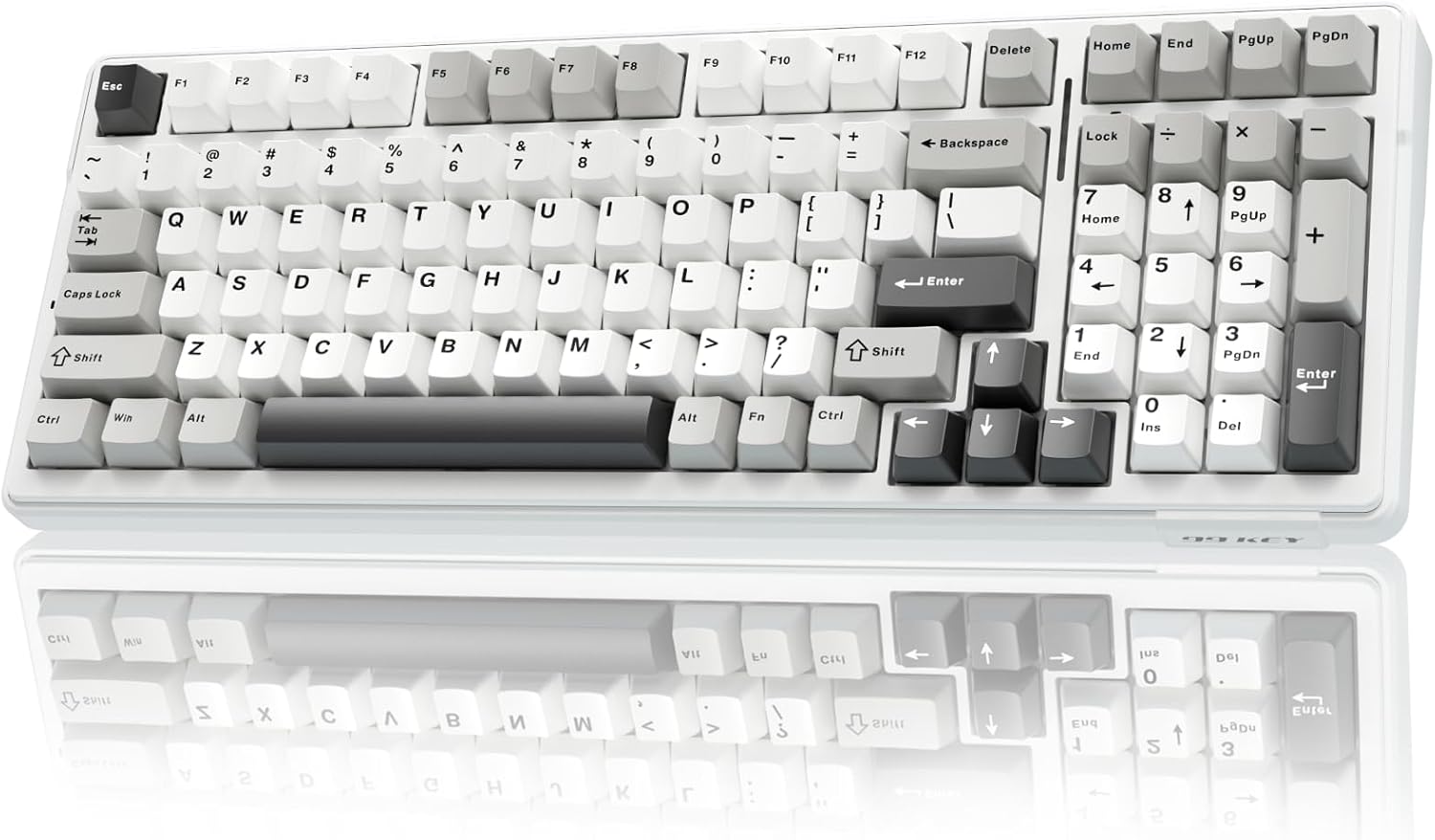
The AULA F99 offers a compact 96% layout, giving you almost all the keys of a full-size keyboard in a smaller footprint. It features tri-mode connectivity and a massive 8000mAh battery for long-lasting wireless use. The gasket-mounted structure and five-layer sound dampening provide a comfortable and quiet typing experience. The hot-swappable sockets allow for easy switch changes, making it a great option for experimenting with different switch types.
Pros:
- Compact 96% layout
- Tri-mode connectivity
- 8000mAh battery
- Hot-swappable
Cons:
- 96% layout can take some getting used to
Who it's for: Perfect for users who need a full set of keys in a more compact form factor.
Wobkey Rainy75
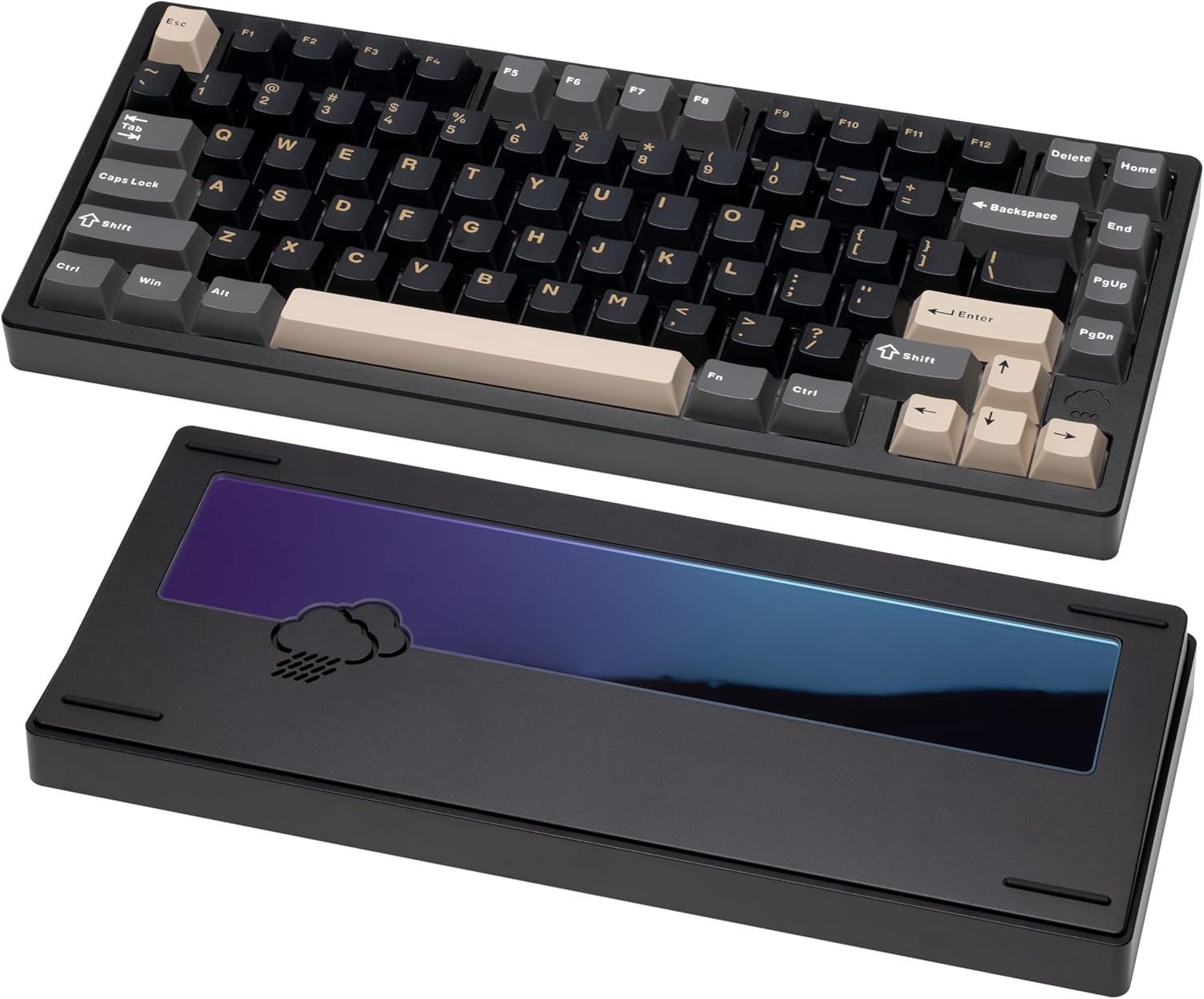
For a premium, minimalist experience, the WOBKEY Rainy75 is an excellent choice. It features a solid aluminum case, five-layer acoustic dampening, and a gasket-mounted design for a soft and quiet typing experience. It offers tri-mode connectivity and hot-swappable switches, allowing you to customize the feel and sound to your liking. The south-facing RGB lighting adds a touch of flair without being overwhelming.
Pros:
- Premium aluminum case
- Excellent sound dampening
- Tri-mode connectivity
- Hot-swappable
Cons:
- Higher price point
Who it's for: Ideal for users who value a premium typing experience and are willing to invest in a high-quality keyboard.
Akko 5075B Plus Air
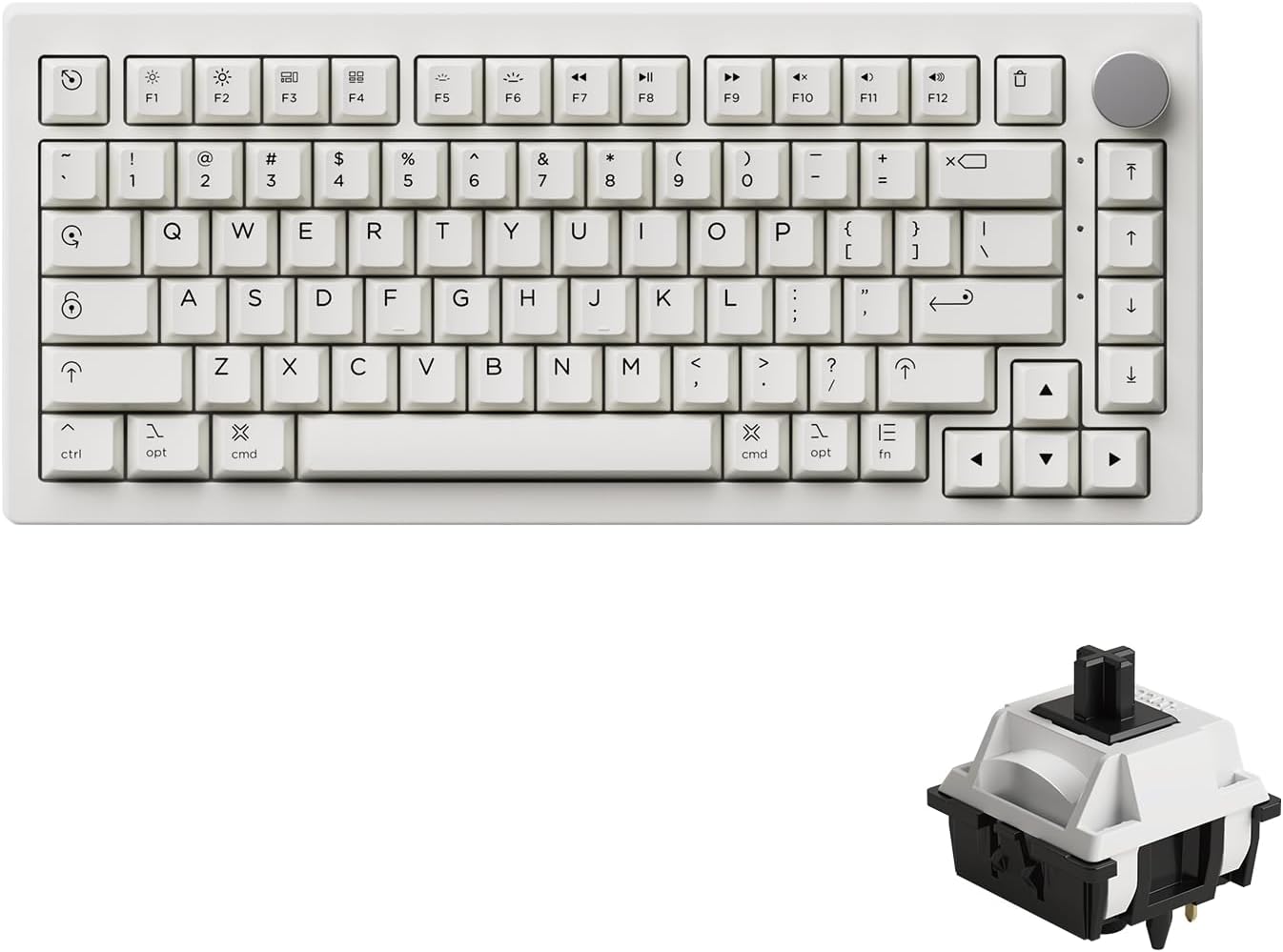
The Akko 5075B Plus Air stands out with its Mac-themed design and vibrant PBT dye-sub keycaps. This 75% wireless mechanical keyboard offers tri-mode connectivity and hot-swappable sockets for easy switch changes. The customizable knob allows you to adjust volume, brightness, or other functions using the Akko Cloud Driver. It's a great option for those who want a stylish and functional keyboard with plenty of customization options.
Pros:
- Unique Mac-themed design
- Tri-mode connectivity
- Hot-swappable
- Customizable knob
Cons:
- Mac-themed design might not appeal to everyone
Who it's for: Perfect for Mac users or anyone who appreciates a unique and stylish keyboard.
Building Your Keyboard: A Step-by-Step Guide
- Gather Your Components: Make sure you have everything you need before you start.
- Install Stabilizers: Attach the stabilizers to the PCB. Lubing them at this stage can reduce rattle.
- Mount the PCB: Place the PCB into the case.
- Install Switches: Carefully insert the switches into the hot-swappable sockets.
- Add Keycaps: Place the keycaps on top of the switches.
- Connect and Test: Connect the keyboard to your computer and test all the keys.
Visual Aid Suggestion: A video demonstrating each of these steps would be incredibly helpful here.
Choosing the Right Switches
Switches are a crucial part of the mechanical keyboard experience. Here's a quick overview of the main types:
- Linear: Smooth and consistent keystroke with no tactile feedback. Popular choices include Cherry MX Red, Gateron Yellow, and speed silvers.
- Tactile: Provide a bump when the key actuates, giving you feedback that the keypress registered. Cherry MX Brown and Holy Panda are popular tactile switches.
- Clicky: Similar to tactile switches, but with an audible click sound. Cherry MX Blue is the most well known.
Visual Aid Suggestion: A switch chart showing the force diagrams of different switch types would be a great addition.
Keycap Materials and Profiles
Keycaps are typically made from ABS or PBT plastic. PBT keycaps are generally more durable and resistant to shine. Keycap profile refers to the shape and height of the keycaps. Common profiles include Cherry, OEM, and DSA.
Final Thoughts
Building your own mechanical keyboard is a rewarding experience that allows you to create a truly personalized typing experience. With hot-swappable keyboards like the EPOMAKER EA75, Keychron K2 HE, AULA F99, Wobkey Rainy75, and Akko 5075B Plus Air, the process is easier than ever. So, dive in, experiment with different components, and build the keyboard of your dreams!
Ready to start your mechanical keyboard journey? Explore the products mentioned in this guide and find the perfect fit for your needs. Don't forget to share your own build tips and experiences in the comments below!
Mechanical Keyboard Starter Guide
Ever wanted to learn about or build your own mechanical keyboard? This guide will show you everything you need to know.
Learn More